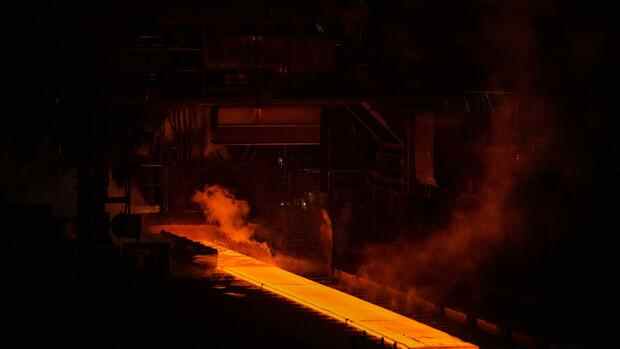With its classification, Klöckner wants to provide its customers with a basis for calculation.
(Photo: dpa)
Dusseldorf Europe’s largest independent steel trader, Klöckner & Co., has developed a classification system for CO2-reduced steel products. As the company announced on Wednesday at its balance sheet press conference, the product information will in future be expanded to include information on the CO2 emissions generated during production.
“We want to cover the entire value chain, from mining the iron ore to the finished product,” said Klöckner CEO Guido Kerkhoff.
So far there is no uniform definition of green steel. Because the manufacturers in Europe are pursuing different strategies for decarbonization.
The emissions of the individual manufacturing processes are quite different. While the production of one ton of steel in a blast furnace releases up to three tons of carbon dioxide, it is much less CO2 in an electric furnace – however, not all steel goods can be produced in this way.
Top jobs of the day
Find the best jobs now and
be notified by email.
With its classification, Klöckner wants to provide its customers with a clean basis for calculation, which they can then take into account in their own CO2 balance sheets. The steel trader specifies the CO2 pollution in a total of five categories, with no manufacturer currently achieving the best category, which starts at emissions of 400 kilograms of CO2 per tonne of steel.
Clean calculation basis for customers
But that is set to change in the next few years: by 2025, the proportion of products that fall into the two best sustainability classes in the Klöckner portfolio is set to increase to 30 percent, and by 2030 even to 50 percent.
Klöckner boss Kerkhoff does not expect the prices for end products such as cars or washing machines to increase significantly as a result of the switch to climate-neutral production processes. “For a car we’re talking about a price difference of 0.7 percent, for wind turbines it’s up to five percent,” says the manager. “Steel has a high weight in many products, but not a high value.”
More: KlöCo with strong numbers and higher dividend
